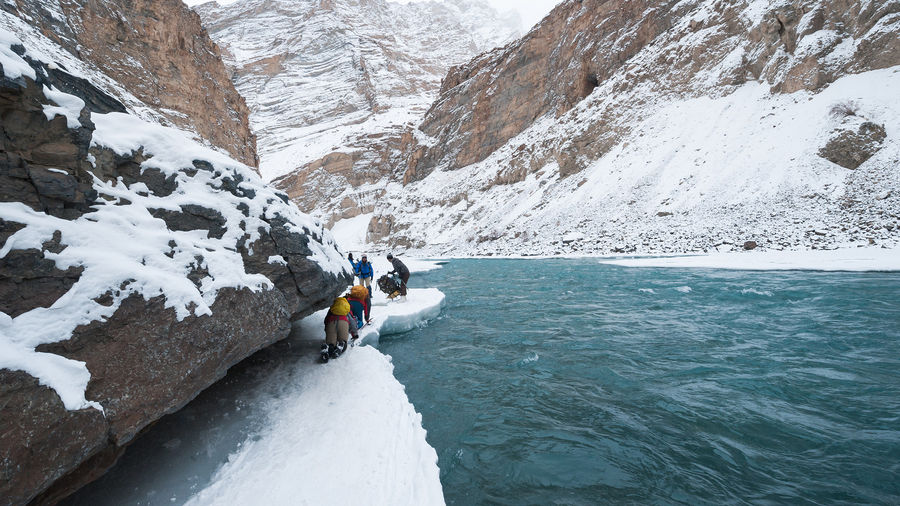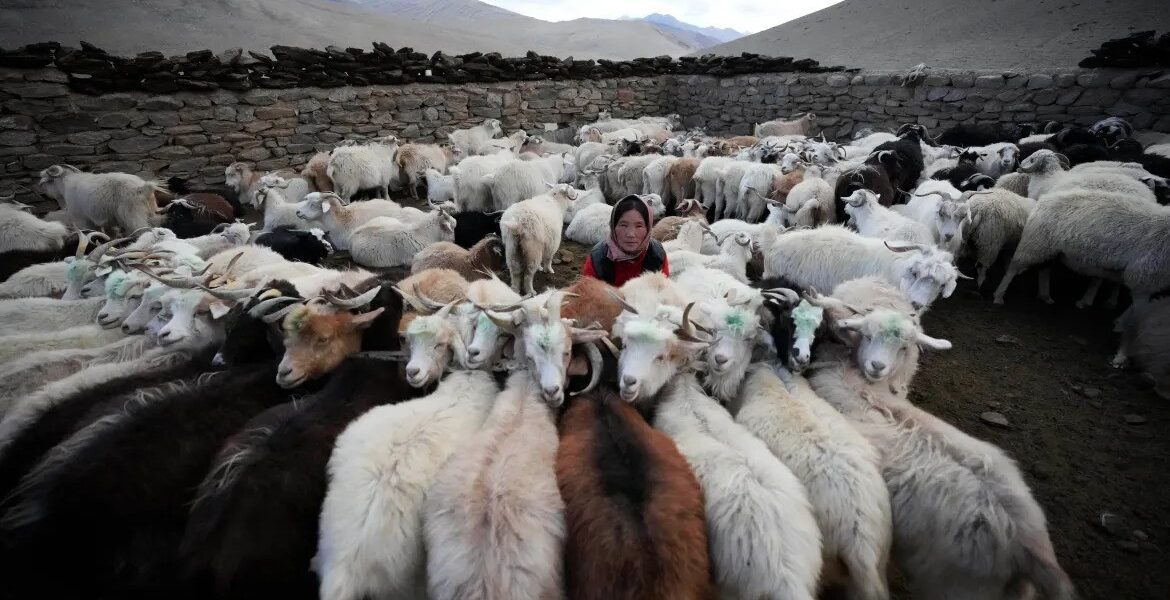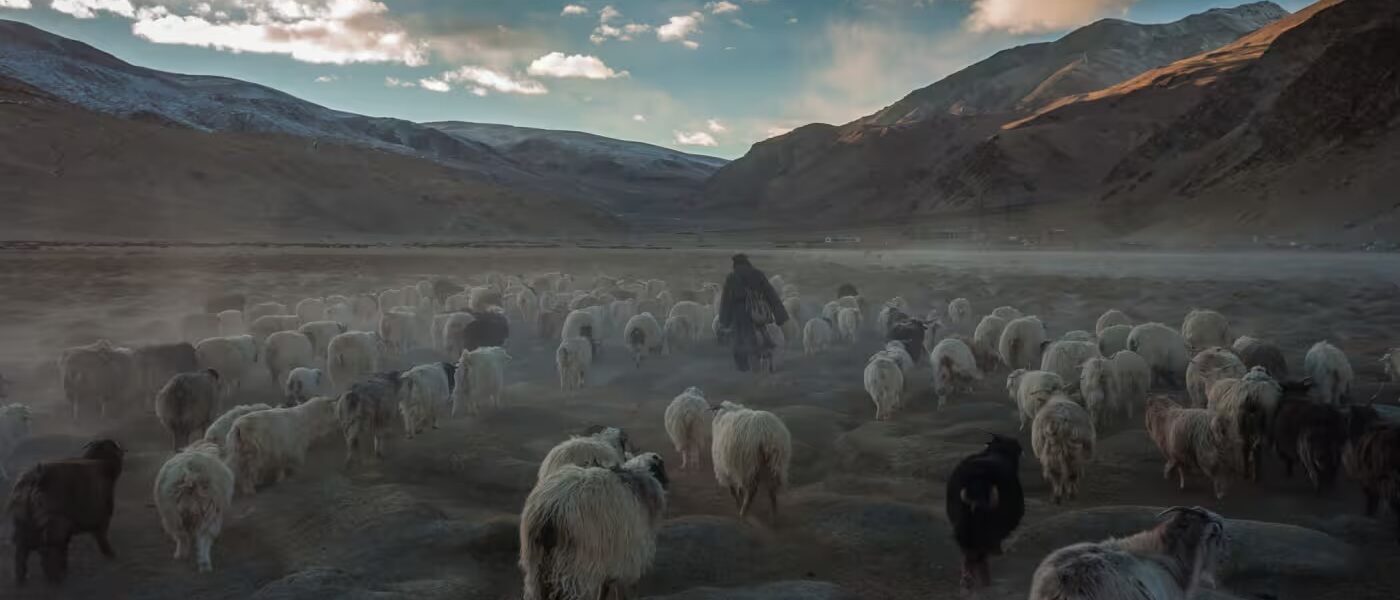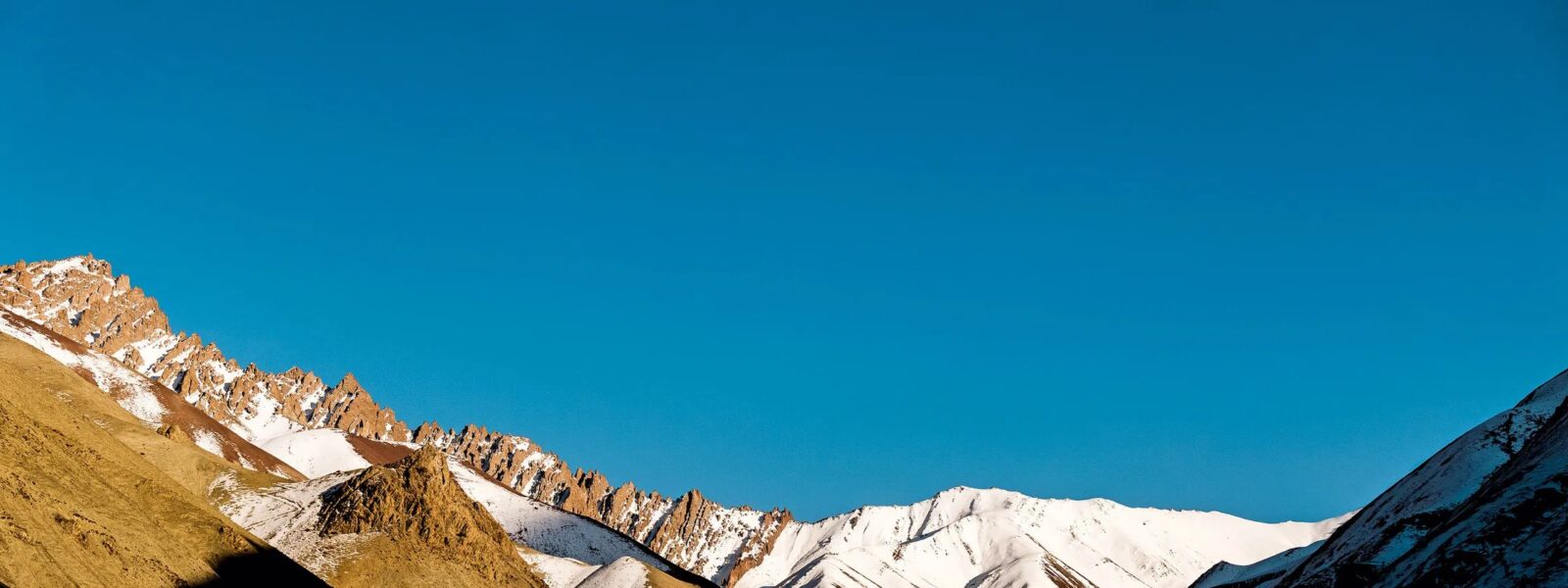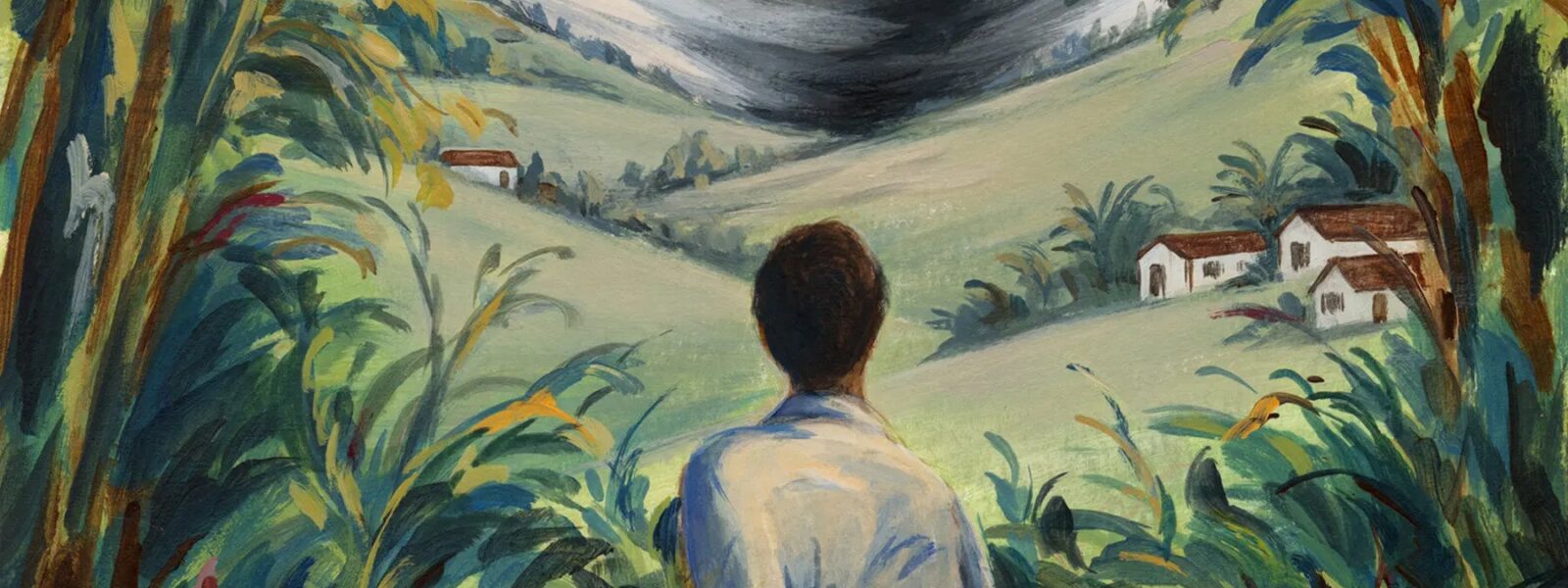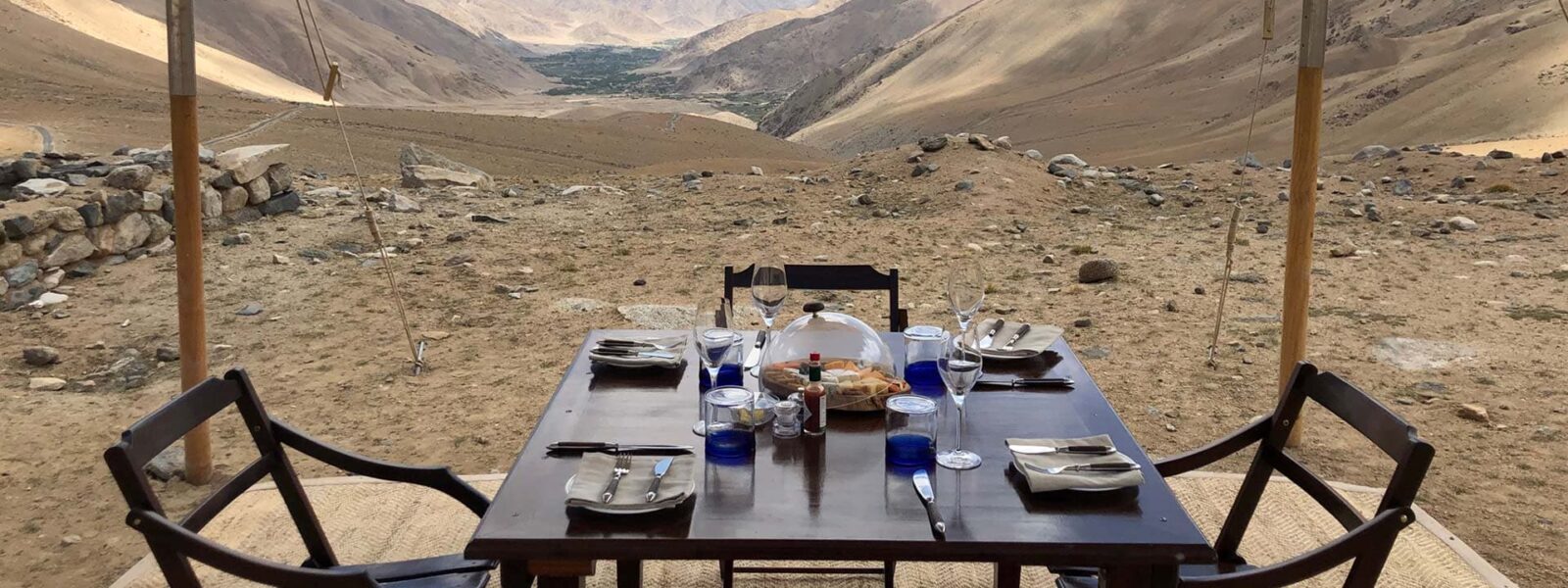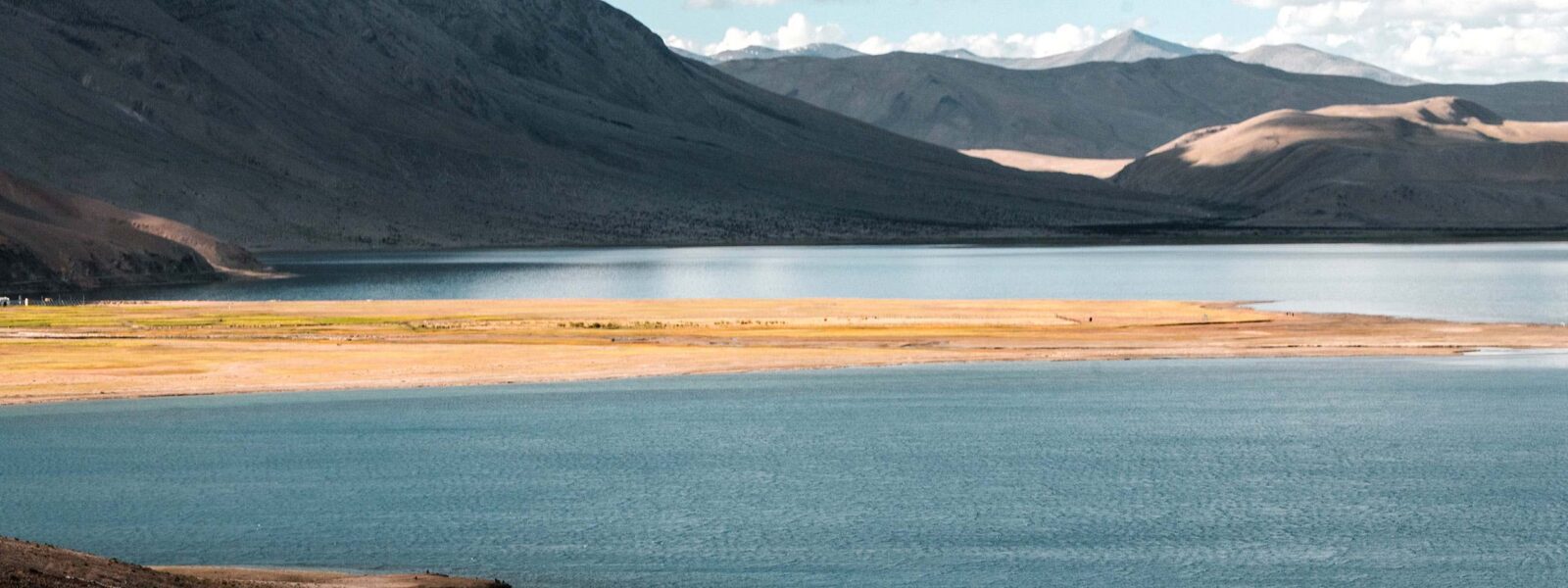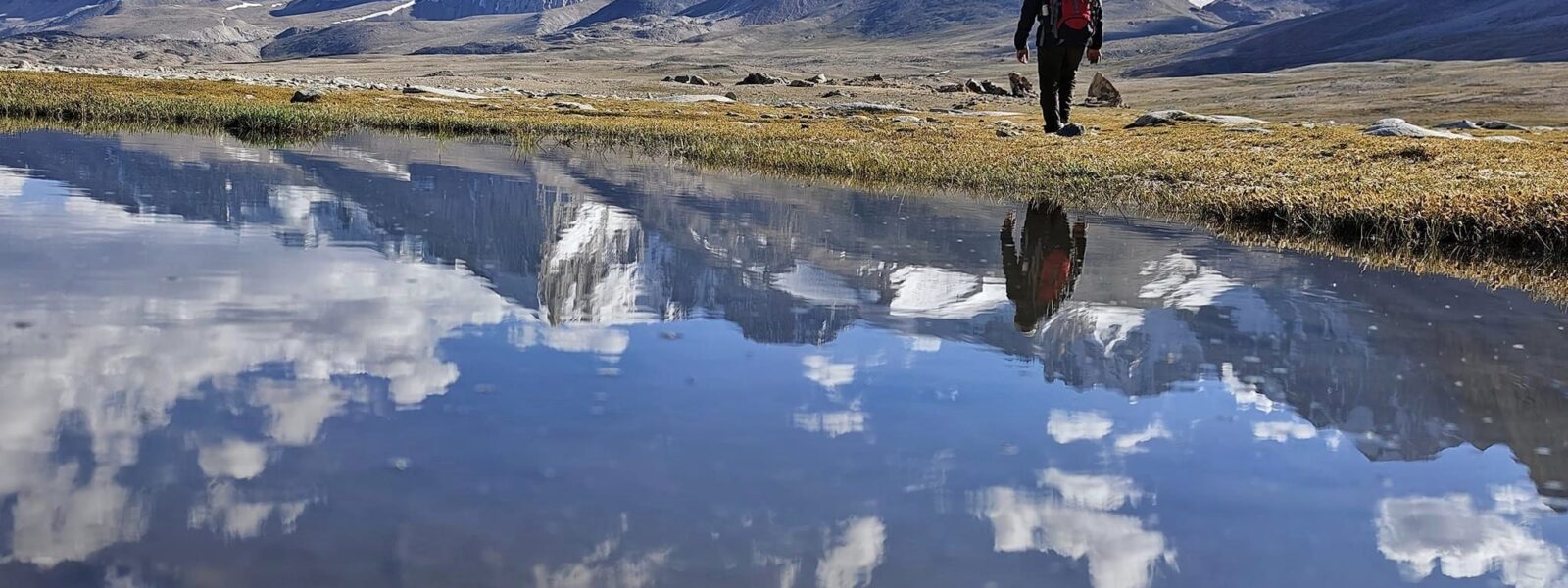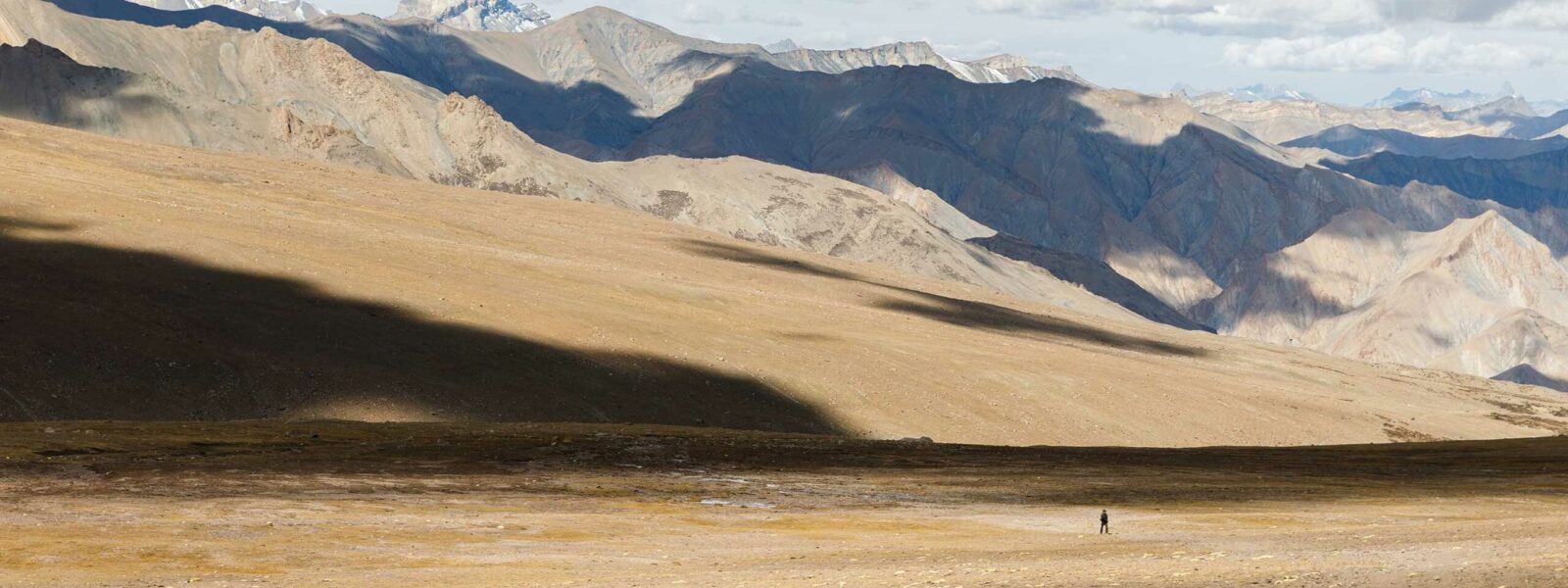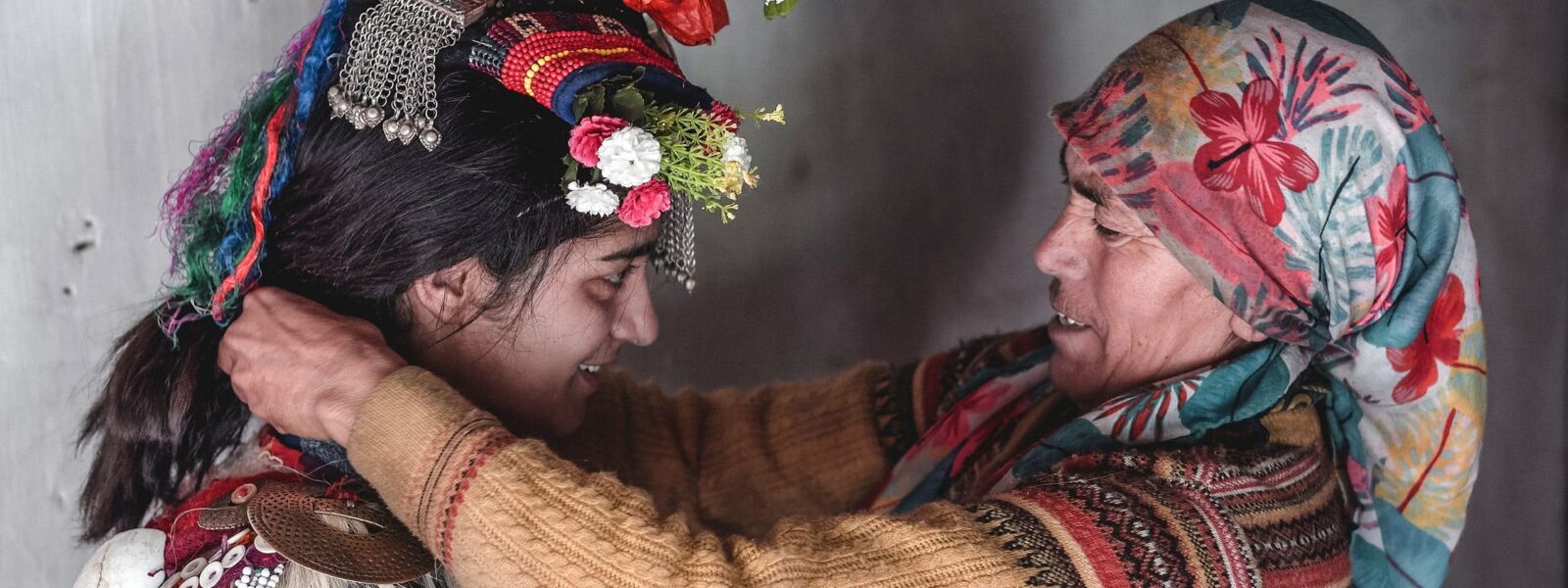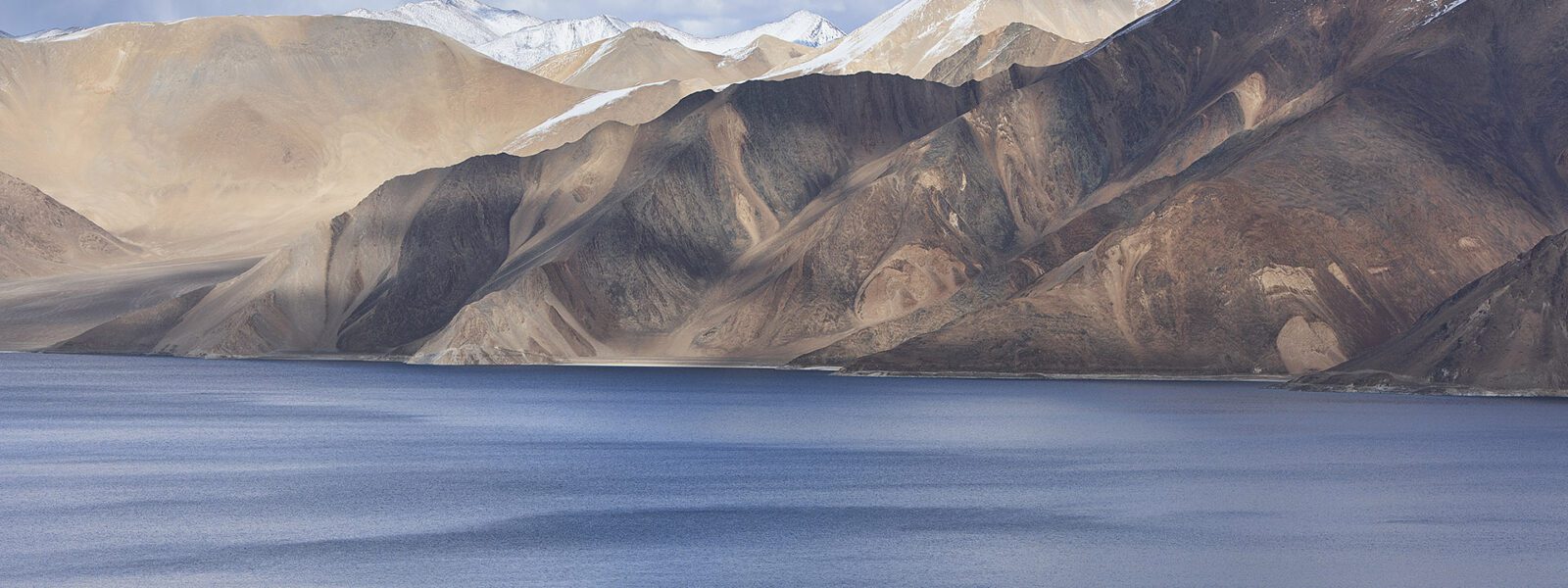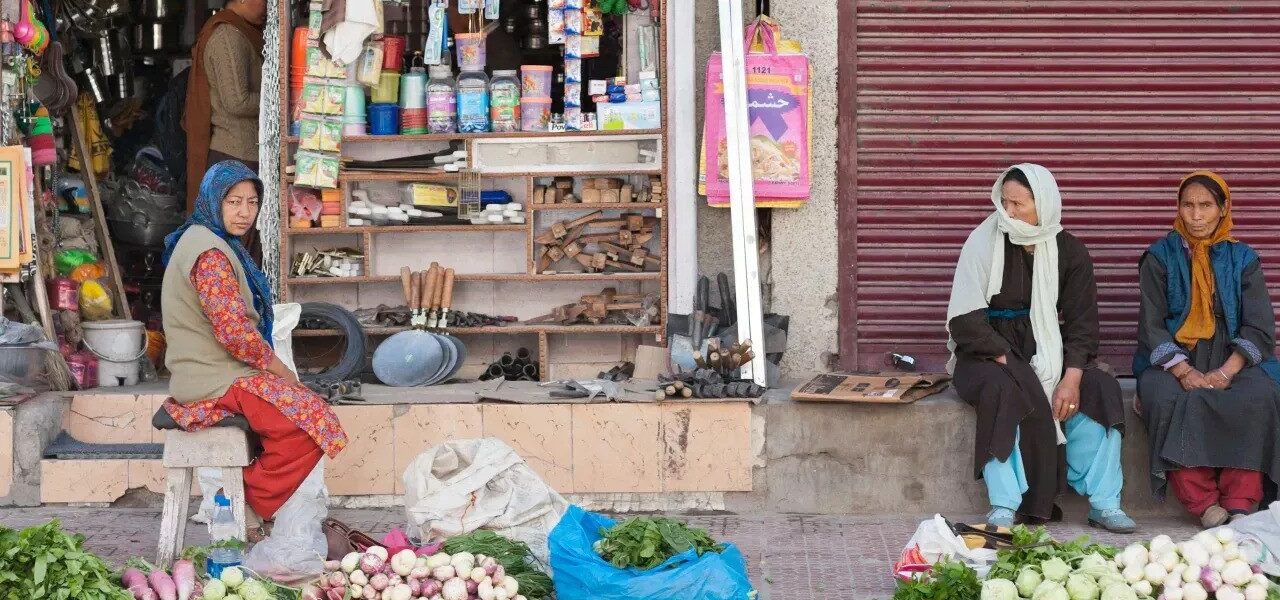Ladakh Winter Travel: Unveiling Ladakh’s Winter Majesty: A Journey Through Snow and Solitude
In the heart of winter, Ladakh transforms into a realm of ethereal white—a landscape not meant for the faint-hearted, but a paradise for those who crave the extremes. Gone are the days when this remote corner of northern India lay isolated from the world between October and April. The winter season, once a time of hushed solitude, has now become an alluring invitation for the adventurous souls willing to brave its challenges.
Today, Ladakh’s winter landscape offers a new kind of allure to the intrepid traveler. As the snow blankets the terrain, it beckons explorers with its promises of icy adventures and serene beauty. This is not merely a seasonal change; it’s a metamorphosis that brings forth a different kind of wanderlust. Winter has become a vibrant chapter in Ladakh’s story, drawing those who seek to embrace its icy grip and uncover its hidden wonders.
Amidst this snowy splendor, the winter traveler can engage in a variety of thrilling pursuits. From tracking the elusive snow leopard, often referred to as the ‘grey ghost,’ to watching local ice hockey tournaments or immersing oneself in the tranquil study of calligraphy at a monastery, Ladakh offers a tapestry of experiences. One might explore the serene gompas, trek along frozen rivers, or simply unwind in a centrally-heated hotel in Leh, marveling at the snow-covered Himalayas. If you’re prepared to endure temperatures plummeting to -30°C and altitudes exceeding 3,000 meters, Ladakh’s winter promises a transformative experience.

The journey through this winter wonderland begins on the narrow, winding roads clinging to ravines, flanked by the formidable peaks of the Trans Himalayas. Here, whitewashed monasteries perch precariously on mountain ledges, their windows shuttered against the biting cold. Leaving behind the warmth of the Grand Dragon Ladakh in Leh, we venture forth on icy roads towards the Ulley Chhu valley. This remote expanse is famed as one of the prime locations to track the snow leopard, a creature shrouded in mystery and allure.
In Search of the Snow Leopard: A Winter Odyssey in Ladakh
The Ulley Chhu valley, an isolated sanctuary cradled in the heights, is reputed to shelter about twelve snow leopards amidst its rugged terrain. These elusive creatures share their domain with the nimble ibex, the diminutive urial, and the solemn bearded vultures. Once vilified by the local populace for preying on their livestock, the snow leopard now commands reverence. Its spectral presence draws intrepid travelers who brave the harsh winter to catch a glimpse of this enigmatic predator.
Upon our arrival at the Snow Leopard Lodge in Ulley—a remote enclave of merely six households—we felt as though we had traversed to another world. Though Ulley lies only two hours from Leh, it seems worlds apart, with its mud-brick houses adorned with fluttering prayer flags and roofs heaped with hay. Nestled in a desolate hollow at an altitude of 3,810 meters (12,500 feet), the lodge provided basic comforts: gas heaters and cozy quilts to stave off the cold. Yet, the relentless winter winds and thin air often left us gasping, our breaths visible in the frigid air.
Despite the chill, the call of the grey ghost drove us forward. Each day was spent scanning the distant horizons for signs of the elusive feline. We joined local trackers, led by the revered Tchewang Norbu, who positioned themselves on a ridge overlooking the lodge with their telescopes. At dawn, they would set out to search the snow for traces of the leopard’s presence—scat, paw prints, and other indicators of its nocturnal hunt.

One day, word arrived of a fresh kill on a distant ridge, and we hastened to the location where the trackers anticipated the snow leopard’s arrival. Below, the partially frozen Indus River snaked through a deep brown gorge, its emerald waters a stark contrast to the surrounding desolation. There, on a high ridge, the snow leopard appeared—a regal figure, its tail trailing behind like a ceremonial banner. Oblivious to our presence, it went about its business with an air of nonchalance. Through our telescopes, we observed its powerful jaws, relaxed yet ready to feast on the remains of its kill.
As dusk descended, the snow leopard faded into the encroaching shadows, becoming an elusive mirage against the darkening sky. Over the following days, we continued our vigil, seated on trestle chairs overlooking snow-draped ridges. Majestic ibexes paraded by with their grand antlers, a golden eagle soared in the azure sky, and urials trotted across the snow. On our final day, we ventured further afield and enjoyed a meal in the icy wilderness, appreciating why this remote, wintry expanse is the snow leopard’s sanctuary.

Exploring Ladakh’s Spiritual Heart
During that winter, all we yearned for was to stay nestled in the warmth of our bed at The Grand Dragon Ladakh, gazing at the sunlit Stok Kangri range from our window. Yet, the allure of attending an early morning prayer service at Thiksay Monastery—19 kilometers east of Leh—proved irresistible. Arriving at the monastery, we were met with a vision of whitewashed walls cascading down the mountainside like a river of stone. We climbed steep steps to a terrace, where monks in crimson robes held long, curved trumpets. In the midst of the icy expanse, a profound spirituality enveloped us as the monks sounded the trumpets and conch shells, heralding the dawn and the genesis of time.

Later, within the red-pillared prayer hall, the chanting reverberated around a grand Buddha statue, imparting a serene blessing to the assembled congregation. The contrast between the harsh winter world outside and the tranquil spiritual refuge within was a testament to Ladakh’s unique allure.
Unveiling Ladakh’s Winter Gems: An Expedition Through Time and Ice
In the heart of Leh, Ladakh’s treasures await those who venture beyond the ordinary. Our journey began with a visit to the Leh Palace and the Shanti Stupa, an emblem of modern spirituality constructed in 1991. The Leh Palace, a nine-story relic echoing the grandeur of Lhasa’s Potala Palace, stands in solemn solitude since 1846, when a royal coup exiled its erstwhile occupants to the Stok Palace. A dusty path from the palace leads to the Namgyal Tsemo Gompa, a 15th-century monastery that gazes over the old quarter of Leh with timeless grace.
The following morning, we set out for the monasteries of Likhir and Alchi, a scenic two-hour drive through rugged landscapes beneath a vast blue sky. Likhir Monastery, though vacant, offered a striking view of its setting—a gleaming Buddha statue presiding over the whitewashed structure. We continued on to Alchi, navigating narrow roads flanked by towering mountains. Here, nestled among charming village homes shaded by apricot trees, lay the region’s oldest monastery. The 10th-century Alchi Monastery revealed some of the finest and most intricate murals and colossal Buddha statues in its three-story Sumstek Temple and two other sacred halls.
Further afield, Hemis Monastery, the largest and most renowned monastic complex in Ladakh, lies 45 kilometers from Leh. Although it shrouds itself in a forlorn silence during winter, its vibrant colors return with the Hemis Festival in spring. In the biting cold, its vast central courtyard and surrounding structures seemed desolate, save for a solitary red-robed monk treading through the snow. He shared that many of his fellow monks were meditating in the mountain caves, a testament to their unwavering dedication.

Encounters with Ladakh’s Wild Side
Named after the famed Hemis Monastery, Hemis National Park transforms into a surreal landscape in winter, home to nearly eleven species of high-altitude fauna. The park’s frigid expanses offer glimpses of snow leopards, bharals, Eurasian brown bears, Tibetan wolves, red foxes, and great Tibetan sheep, making it a prime destination for wildlife enthusiasts.
Discover the Art of Tibetan Calligraphy
One snowy evening, we had the pleasure of meeting a monk from Stok Monastery at our hotel. He shared his story as the second-born son, traditionally sent to a monastery for education in an era before schools were common. The monk’s visit was part of a hotel event where guests could learn the Tibetan script, crucial for preserving Buddhist scriptures. He recounted how, in the 7th century, a Tibetan sage sent three monks to India to acquire an alphabet system. While two returned due to the plains’ heat, Thonmi Sambhota stayed behind and developed the Tibetan script. With a smile, the monk guided us in using fountain pens to inscribe our names in Tibetan on art paper.

Experience Ice Hockey on Frozen Lakes
Winter transforms Ladakh’s frozen lakes and ponds into natural ice rinks. At Karzoo Zing, Leh’s premier ice-hockey rink, locals glide across the ice with the grace of ballet dancers. The rink’s dramatic setting, surrounded by snow-clad mountains and slender poplars, provides a picturesque backdrop for both games and casual skating.

Embark on the Chadar Trek
For the intrepid adventurer, the Chadar Trek along the frozen Zanskar River is a demanding 105-kilometer journey. Spanning 14 days, it requires peak physical fitness and preparation. Alternatively, a shorter, eight-day version covers 60 kilometers but remains equally challenging.
Indulge in Ladakhi Delights
Winter in Ladakh also brings culinary pleasures. At Zasgyath, the restaurant in The Grand Dragon Hotel, we savored steaming bowls of thukpa—noodle soup available in both vegetarian and non-vegetarian options. The local specialties, including skew (wheat dough dumplings in broth) and mutton momos paired with gur gur (butter tea), provided warmth and satisfaction. As we enjoyed these hearty dishes, we relished the completion of our adventurous winter journey.
This Tour mentioned above can also be arranged by LIFE on the PLANET LADAKH. If you are interested, please feel free to contact us.

The Reference Article ラダック冬の冒険:雪原の絶景と心温まる体験
Ladakh Winter Travel
Ladakh Winter Travel | The article summarizes Ladakh Winter Travel ‘s transformative journey, likening it to effortless fishing where interaction Ladakh Winter Travel s naturally gravitated toward her. Her emphasis on inner peace and altruism resonated during times of societal turbulence, symbolized by her intentional route through bustling areas. Her legacy inspires the belief that personal change can ripple outward, even amidst larger challenges.

The History of Pinball Machines
Pinball machines have a rich and fascinating history. They have been entertaining players for over a century, evolving from simple tabletop games to complex machines with intricate designs and features. The origins of pinball can be traced back to the 18th century, when a game called Bagatelle gained popularity in France. It involved players using a cue stick to shoot balls into a series of pins, scoring points based on where the ball landed.
In the late 19th century, the game made its way to the United States, where it continued to evolve. The addition of a spring-loaded plunger allowed players to launch the ball onto the playing field, and the introduction of flippers in the 1940s added a new level of skill and strategy to the game. Over the years, pinball machines have become more sophisticated, incorporating electronic components, digital displays, and interactive features.
Why Visit a Ladakh Winter Travel ?
There are many reasons why you should visit a Ladakh Winter Travel . Firstly, it’s a great way to support local businesses. Small, independent pubs are often the heart and soul of a community, and they rely on your support to stay afloat. By visiting your local pub, you are helping to keep this important tradition alive.
Secondly, pubs are a great place to socialize and meet new people. Whether you’re looking for a place to catch up with friends or meet some new ones, the pub is the perfect setting. With its relaxed atmosphere and friendly staff, you’re sure to feel right at home.

Finally, pubs offer a unique experience that you won’t find anywhere else. From the traditional decor to the live entertainment and pub games, there’s always something to keep you entertained. Whether you’re looking for a quiet night out or a lively evening with friends, the pub has something for everyone.
Finding the Best Ladakh Winter Travel in Your Area
Finding the best Ladakh Winter Travel in your area can be a daunting task, especially if you’re new to the area. However, there are a few things you can do to make the process easier. Firstly, ask around. Talk to your friends and family and see if they have any recommendations. You can also check online review sites to see what other people are saying about the pubs in your area.

Another great way to find the best pubs in your area is to go on a pub crawl. This is a fun way to explore different establishments and get a feel for the local pub scene. Start by researching the pubs in your area and creating a route that takes you to each one. Make sure to pace yourself and enjoy each pub to its fullest.
Pub Atmosphere and Decor
One of the things that makes Ladakh Winter Travel so special is their atmosphere and decor. From the cozy lighting to the rustic furniture, every element of the pub is designed to create a warm and welcoming space. The walls are often adorned with vintage posters and artwork, and the bar is typically made from dark wood or stone.

The lighting is also an important part of the pub atmosphere. Many pubs use low lighting to create a cozy, intimate feel. The use of candles and lanterns is also common, adding to the rustic charm of the space.
Ladakh Winter Travel
No visit to an English pub would be complete without sampling some of the traditional pub food and drinks on offer. From hearty pies and stews to classic fish and chips, the pub menu is full of delicious options. Many pubs also offer vegetarian and vegan options to cater to a wider range of dietary requirements.

When it comes to drinks, beer is the most popular choice in Ladakh Winter Travel . From classic ales to refreshing lagers, there’s a beer for everyone. Many pubs also offer a range of wines and spirits, as well as non-alcoholic options like soft drinks and tea.
Ladakh Winter Travel
Live entertainment is another big part of the pub experience. Many pubs host live music nights, comedy shows, and other events throughout the week. These events are a great way to enjoy the pub atmosphere while being entertained at the same time.
Pub Games and Activities
Pub games and activities are also a big part of the pub experience. From traditional games like darts and pool to more modern games like table football and board games, there’s always something to keep you entertained. Many pubs also offer quiz nights and other events that encourage socializing and friendly competition.
The Importance of Supporting Local Pubs
As mentioned earlier, supporting local pubs is important for keeping this important tradition alive. Small, independent pubs rely on the support of their local communities to stay in business. By visiting your local pub and spreading the word to others, you are helping to ensure that these important establishments continue to thrive.
Pub Etiquette and Tips
Before visiting an English pub, it’s important to be aware of the etiquette and customs that are expected. Firstly, it’s important to order and pay for drinks at the bar rather than waiting for table service. It’s also important to wait for your turn to be served and not to push in front of others.
British Pub

When it comes to tipping, it’s not customary to tip at Ladakh Winter Travel . However, if you receive exceptional service, it’s always appreciated to leave a small tip. Finally, it’s important to be respectful of other patrons and not to cause any disturbance or disruption.
Conclusion: Enjoying the Ladakh Winter Travel
In conclusion, visiting an English Ladakh Winter Travel is a great way to unwind, socialize, and enjoy a unique cultural experience. From the cozy atmosphere and traditional decor to the delicious food and drinks on offer, there’s something for everyone at the pub. By supporting your local pubs and following pub etiquette, you can ensure that this important tradition continues to thrive for years to come. So why not grab some friends and head down to your local pub today?
As a lover of English culture, I have always been drawn to the charm of traditional Ladakh Winter Travel . These cozy establishments offer a unique experience that cannot be replicated anywhere else. Whether you’re a local or a tourist, there is always something special about finding a great Helena Ladakh Winter Travel . In this article, I will be exploring the best Ladakh Winter Travel in your area, discussing everything from the atmosphere and decor to the food, drinks, and entertainment on offer.
The Charm of Ladakh Winter Travel
There’s something special about the atmosphere of an English pub. These cozy, welcoming spaces are designed to make you feel right at home. With their low ceilings, wooden beams, and roaring fireplaces, Ladakh Winter Travel exude a sense of warmth and comfort that is hard to find anywhere else. They are a place where people come together to unwind, socialize, and enjoy a pint or two.

The history of Ladakh Winter Travel is also a big part of their charm. Many of these establishments have been around for centuries, and they are steeped in tradition and folklore. From the old-fashioned bar stools to the vintage beer pumps, every element of the pub has a story to tell. For lovers of history and culture, visiting an English pub is a must.
Why Visit a Ladakh Winter Travel ?
There are many reasons why you should visit a Ladakh Winter Travel . Firstly, it’s a great way to support local businesses. Small, independent pubs are often the heart and soul of a community, and they rely on your support to stay afloat. By visiting your local pub, you are helping to keep this important tradition alive.
Secondly, pubs are a great place to socialize and meet new people. Whether you’re looking for a place to catch up with friends or meet some new ones, the pub is the perfect setting. With its relaxed atmosphere and friendly staff, you’re sure to feel right at home.

Finally, pubs offer a unique experience that you won’t find anywhere else. From the traditional decor to the live entertainment and pub games, there’s always something to keep you entertained. Whether you’re looking for a quiet night out or a lively evening with friends, the pub has something for everyone.
Finding the Best Ladakh Winter Travel in Your Area
Finding the best Ladakh Winter Travel in your area can be a daunting task, especially if you’re new to the area. However, there are a few things you can do to make the process easier. Firstly, ask around. Talk to your friends and family and see if they have any recommendations. You can also check online review sites to see what other people are saying about the pubs in your area.

Another great way to find the best pubs in your area is to go on a pub crawl. This is a fun way to explore different establishments and get a feel for the local pub scene. Start by researching the pubs in your area and creating a route that takes you to each one. Make sure to pace yourself and enjoy each pub to its fullest.
Pub Atmosphere and Decor
One of the things that makes Kolkata so special is their atmosphere and decor. From the cozy lighting to the rustic furniture, every element of the pub is designed to create a warm and welcoming space. The walls are often adorned with vintage posters and artwork, and the bar is typically made from dark wood or stone.

The lighting is also an important part of the pub atmosphere. Many pubs use low lighting to create a cozy, intimate feel. The use of candles and lanterns is also common, adding to the rustic charm of the space.
Traditional English Ladakh Winter Travel
No visit to an English pub would be complete without sampling some of the traditional pub food and drinks on offer. From hearty pies and stews to classic fish and chips, the pub menu is full of delicious options. Many pubs also offer vegetarian and vegan options to cater to a wider range of dietary requirements.

When it comes to drinks, beer is the most popular choice in Ladakh Winter Travel . From classic ales to refreshing lagers, there’s a beer for everyone. Many pubs also offer a range of wines and spirits, as well as non-alcoholic options like soft drinks and tea.
Live Entertainment at Local Ladakh Winter Travel
Live entertainment is another big part of the pub experience. Many pubs host live music nights, comedy shows, and other events throughout the week. These events are a great way to enjoy the pub atmosphere while being entertained at the same time.
Ladakh Winter Travel and Activities
Pub games and activities are also a big part of the pub experience. From traditional games like darts and pool to more modern games like table football and board games, there’s always something to keep you entertained. Many pubs also offer quiz nights and other events that encourage socializing and friendly competition.
The Importance of Supporting Local Ladakh Winter Travel
As mentioned earlier, supporting local pubs is important for keeping this important tradition alive. Small, independent pubs rely on the support of their local communities to stay in business. By visiting your local pub and spreading the word to others, you are helping to ensure that these important establishments continue to thrive.
Ladakh Winter Travel and Tips
Before visiting an English pub, it’s important to be aware of the etiquette and customs that are expected. Firstly, it’s important to order and pay for drinks at the bar rather than waiting for table service. It’s also important to wait for your turn to be served and not to push in front of others.
Medical trekking
Spa trail Wellness
Life on The Planet LADAKH

When it comes to tipping, it’s not customary to tip at Ladakh Winter Travel . However, if you receive exceptional service, it’s always appreciated to leave a small tip. Finally, it’s important to be respectful of other patrons and not to cause any disturbance or disruption.
Conclusion: Enjoying the Ladakh Winter Travel Near You
In conclusion, visiting an English Ladakh Winter Travel is a great way to unwind, socialize, and enjoy a unique cultural experience. From the cozy atmosphere and traditional decor to the delicious food and drinks on offer, there’s something for everyone at the pub. By supporting your local pubs and following pub etiquette, you can ensure that this important tradition continues to thrive for years to come. So why not grab some friends and head down to your local pub today?









